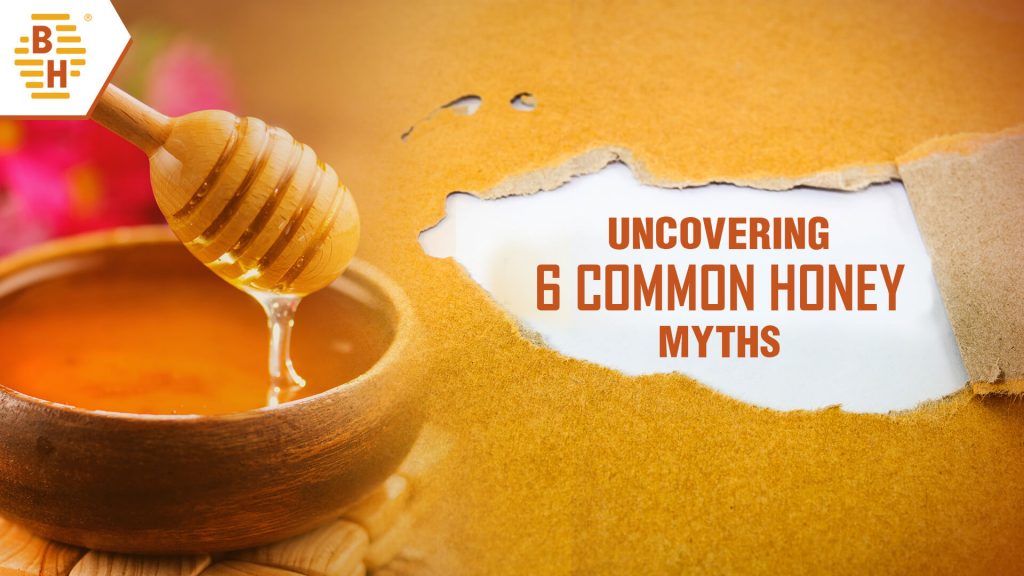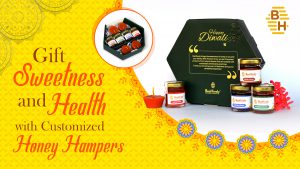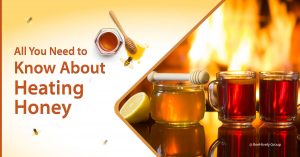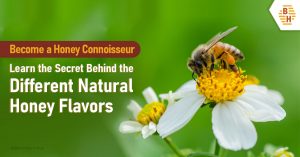The goodness and health benefits of raw organic honey have been recognized for centuries. To this day, honey is used for its medicinal benefits. From promoting heart health to its ability to soothe a persistent cough, the ‘sweet gold’ holds a proprietary role in many treatments and underlying needs to achieve top-notch health. It is an essential part of human agriculture and is one of the most talked-about substances globally.
Busting Common Myths about Honey
Despite the numerous health benefits raw organic honey offers, the misconstructions often associated with honey have caused many people to stay away or misuse it. The misconceptions about honey have intertwined for so long that it has become difficult to separate the two. Read ahead and enjoy the benefits of the golden elixir – honey, without any fears.
Myth 1: Crystallized honey is spoilt
We need to learn that crystallization is a normal process that happens to raw honey. Pasteurized honey does not crystallize and will keep that smooth, clear appearance; however, this doesn’t necessarily make it better. As we have learned before, pasteurized honey has undergone a process of heating that strips some of its essential components.
There are different reasons for honey to crystallize. The most common is the fact that honey has a large percentage of glucose (natural sugar) over water; over time, honey will take a thicker consistency, and it might turn into a darker shade. However, you don’t need to worry because your honey is still safe to eat.
Myth 2: Bees do not require honey for their survival
As per this misconception, the sole producers of honey do not need honey to survive. In reality, bees cannot survive without honey, a standard beehive might nearly 25lbs honey to survive the winter hibernation. Honey is an essential source of energy for bees, and without it, they would fail to conduct their daily activities.
Myth 3: Honey must not be heated
One of the biggest myths is that if honey is heated, it releases toxins, making the substance toxic for consumption. The truth is that when heated, natural honey cannot emit poisons and toxins because they are not inherently present in it. Let’s keep in mind that some nutritional value may get lost when honey is exposed to very high temperatures. So, go ahead, add honey to porridge or hot tea without any worry of toxins.
Myth 4: Do not scoop honey with a metal spoon
It is a known fact that honey is a bit acid, and same as any edible acid; if it stays on metal for long, it can destroy the metal. However, scooping honey with a metal spoon is such a quick process that it cannot damage it. At the same time, we do not recommend leaving a metal spoon in the honey jar for long.
Myth 5: Darker honey is not as pure as lighter honey
According to a misconception, honey that is darker in color has gone bad. The reality is that honey comes in various flavors, textures, and colors. The color of honey depends on the region, soil, and climate where the flowers grow. Honey can also turn darker with time, but this does not mean that it’s spoiled.
Myth 6: The purity of honey can be tested by putting honey in water
You can find a lot of information online and on social media, stating that if your honey dissolves in water, then it is adulterated/fake. This test of purity is entirely false. Let’s remember that honey contains a small percentage of water, so in reality, pure honey can dissolve in water; it just dissolves slowly.
Procuring and Consuming Raw Honey
There is no denying that honey is packed with antioxidants, nutrients, vitamins, and antibacterial properties and its consumption has been proven to give some great health benefits.
We at BeeHively Group Group educate consumers on identification of authentic honey and the best practices of using it. We also aim to create an ecosystem where beekeepers can thrive by bridging the gap between beekeepers and end customers to deliver natural raw honey and various bee by-products worldwide. The group’s products have been thoroughly assessed and found to be in accordance with the specific guidelines and requirements of the International Organization of Standardization (ISO) and the Food Safety and Standards Authority of India (FSSAI).




